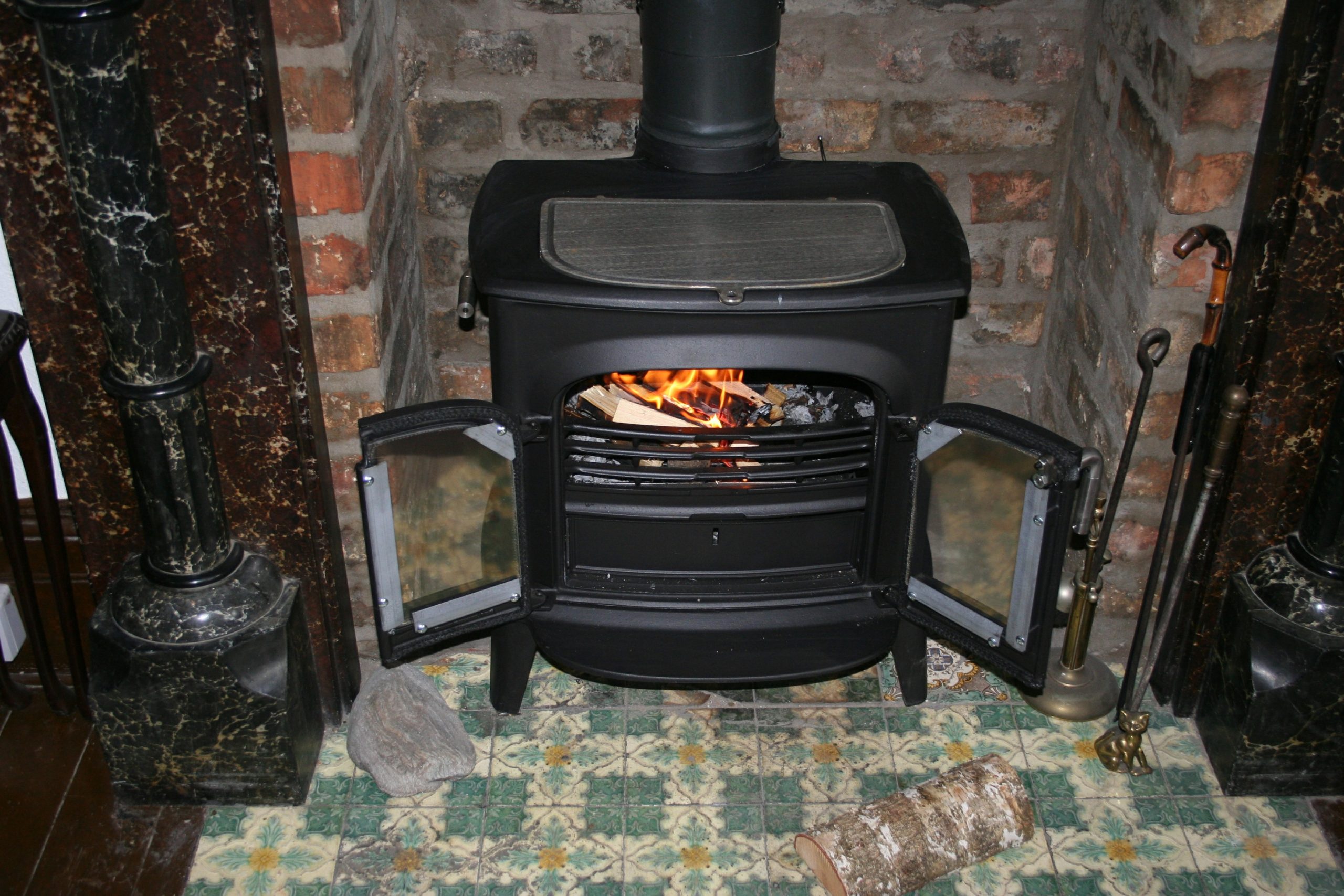Owning a wood burning stove can add so much to a home. The heat, the aesthetics, that cozy feeling of warmth as well as the smell of wood burning and charring over time.
But what happens when the scent isn’t so nice? Or what about when a bad smell lingers long after the fire has died?
Below we will look at some of the most common causes of stoves smells and how to solve what can be a common problem.
Table of Contents
Why does my Wood Stove Smell when Not Used: Common Issues and Causes
New Stove
First up, new stoves.
If you’ve recently bought a brand new wood burning stove then the smell is nothing to worry about. It’s just a “new stove smell”. Usually, this smell comes from the chemicals used in the paint, alongside the aftereffects of sitting in a warehouse or storefront for weeks or months on end.
Just like with other “new” smells, such as “new car smell”, the most common cure is time. Simply ignore it, use your new stove with regularly frequency to begin with and the smell will disappear relatively quickly.
Too Much Ash
When you leave ash for too long, it can generate a smell. Like many things, the longer you leave ash, the more intense this odor can become.
The smell can become highly unpleasant if you leave ash in your fireplace during the months when you don’t use it and the more ash you have in your stove, the worse you can expect the smell.
The best (and probably only) solution is to remove all the ash with a dustpan and brush and put it into a bin.
Wood-Related Causes
Perhaps the wood you burn is the cause of your stoves nasty smell:
Wet Wood
If you use wet wood, when it burns it creates a substance known as creosote. This thick, unpleasant black chemical sticks to the flue and emits a nasty smell.
When using a wood burning stove it’s highly recommended that you only use dry, seasoned wood when building your fires.
Car Fumes
Another common wood-related cause of a bad smelling wood stove is actually car fumes. If you store your wood in a garage to dry it out, it can absorb the exhaust fumes, which come out again when you burn the wood and may linger in the stove after.
Ideally, try to store your wood supply away from cars, potent chemicals, or other substances emitting strong smells.
Varnished Wood
Another type of wood that may cause your stove to smell during and after burning is treated lumber. This is wood that’s been painted and treated with varnish.
Naturally, from time to time, people will breakdown and burn unwanted furniture within the home. This is perfectly normal and works fine in outdoor spaces but we wouldn’t recommend it within the close confines of an indoor wood burning stove. Wooden furniture is coated with a waterproof varnish that releases a smell when burnt. This smell can stick to the inside of your stove and can prove difficult to remove.
Make sure you only use cured and seasoned wood, never treated. A good rule of thumb is don’t burn any wood that isn’t specifically designated as “firewood”.
Burning Other Materials
As well as non-fire wood, non-wood can also cause your stove to smell.
Lighter fluid, scraps, trash and other items from around the house can prove tempting but remember, if it’s not wood then it doesn’t belong in your stove. If you burn it, expect it to create an unwanted smell that might stick around.
Mold
If your stove has mold, this mold can produce a smell that is both unpleasant and unhealthy.
There are several ways mold can grow on a stove. When the weather is both damp and warm, this can create ideal conditions for mold and bacteria to flourish. Burning wet wood can also create the perfect conditions.
Regular stove cleaning is a helpful way to avoid mold build-up. As well as making sure to never burn wet wood.
Dead Animals
This might seem like a strange or unusual cause, but we’ve saved the best to last.
Yes, that’s right, in the summer when you’re not burning wood or using your stove on a regular basis, small animals and rodents can find their way into your flue, where they hunker down for some peace and quiet.
Unfortunately this solitude can come at a price. These small visitors can get stuck, die of natural causes or simply get unlucky and remain there as you strike up your next big roaring fire!
Before lighting up again, and especially after any significant break in use, grab a torch for a look up your flue. You may need to move the stove out the way to do so. If you see any animal (alive or dead) or evidence of visitors, remove it. If you don’t have the equipment, hire a professional chimney cleaner to remove it.
How to Clean a Wood Burning Stove
With all of the above in mind, obviously the overall cleanliness and maintenance of your stove is equally as important as any of the above issues when it comes to smells or lack thereof.
Below you’ll find a very quick guide on how to clean your stove (either for the first time, or just the first in a long time!) but if you want a more detailed guide to wood stove cleaning click here.
1. Wait until it’s completely cool.
2. Sweep away all the ash.
3. Use a cleaning solution of water and vinegar to clean the inside of the stove. After cleaning, leave the door open to let the vinegar smell go away.
4. Clean the glass using a damp paper towel and a small dab of clean wood ash.
5. Clean the outside using a soft brush and a damp cloth.
–
Nothing beats that classic wood burning smell but naturally a stove, just like many other items within the home, can come with problems and issues if left unchecked.
We hope this helps you identify that unwanted smell, and for everything else home heating stick with CosyWarmer.com

